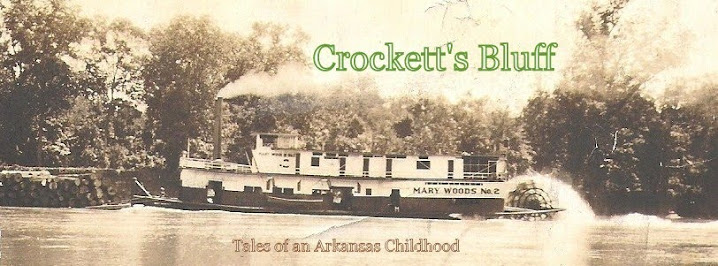Where Legends Begin
 |
| L-R: Cicero Spence, Helen Spence, Joe Black, followed by two unknown boys, a black dog and the rifle of an unknown figure. .
In her article in The Encyclopedia of Arkansas History & Culture, Denise Parkinson provides the following information re this picture. Her source is L.C. (Lamuel Cressie) Brown a childhood friend of Spence. It was passed on to him by John Black the young man in the dark cap seated to Helen's left by the deer head. According to Brown, his late wife's family had a photography studio in DeWitt. Hugh Bowers was the photographer. According to L.C., it was staged in the 1920s at a barn in St. Charles where trappers and buyers came to deal in hides and furs.
This picture is in many ways a typical example of the emerging popularity of the still relatively new photographic technology. Such images were carefully staged to reflect the subjects occupation, possessions, and accomplishments. In New England about this time,the Howes Brothers developed a major industry touring the countrysides recording workers and families -- always in the midst of their work or in front of their homes, and their recorded images reflected the individuals in their finery among their possessions. So it is here.
Here we have Cicero Spence with his young daughter Helen, three young boys, a black dog, and the knee and rifle of another figure. On the wall behind them hang hides - mostly raccoon but one apparently that of a deer whose head with antlers rests at Helen's left. At Cicero's right rests a rifle between two (perhaps mink) hides. He wears a cap to which a carbide hunting lamp could be attached and a ammunition vest partially filled with shotgun shells, casually holding a pistol in his right hand. Helen holds what appears to be a rag doll with a roughly sewn image of a face. It must be winter or late fall, since Helen appears to be wearing "long johns" under her dress. John Black is wearing dark gloves; the second boy has his hands in his pockets.
On the wall among the stretched hides hang two hunting horns. Whether these are for decoration in this "hunting" scene is unclear. Hunters would not in these days use such horns for holding gun powder, but they might well have carried them "corked" at the open end for keeping precious items such as dry matches. The interesting wooden box resting at the lower right with the image of a horse or donkey on its side is a box that originally contained Brown's Mule Chewing Tobacco. (It puzzled me for a while until I was able to verify it, thanks to Google images, with several fin images of similar ones.
|
A Second Image
 |
| James Prange's Snapseed Enhancement of the image. |

No comments:
Post a Comment